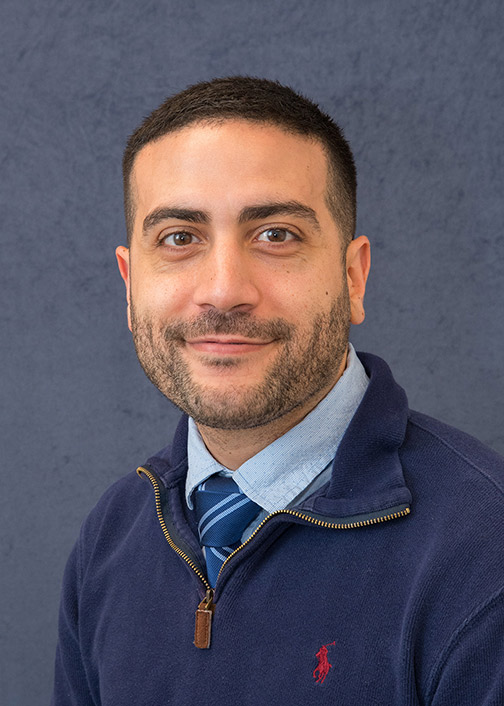Vito Rebecca joins BMB faculty

Vito Rebecca, PhD, the Biochemistry and Molecular Biology Department’s newest assistant professor, joined the department in unusual times.
“My arrival to the Biochemistry and Molecular Biology Department at Johns Hopkins University has been nothing short of a personal dream come true. Admittedly, setting up a laboratory has been a bit challenging due to the COVID-19 epidemic,” said Rebecca. “However, the BMB has been very welcoming and has made this transition smooth, providing me with the space and resources critical for my budding laboratory to blossom.”
Rebecca won’t be the BMB’s newest assistant professor for long–he is one of three assistant professors who have been recruited to join the department; the other two will join in January and March 2021.
“Vito brings to the School a strong interest in Public Health along with his basic science skills. The form of melanoma on which he works, acral melanoma, is one of the melanomas most commonly found in people of color and appears in unusual places like the palms and the soles of the feet,” said Ashi Weeraratna, PhD, E.V. McCollum Chair of BMB and Bloomberg Distinguished Professor of Cancer Biology. “As such it often goes undiagnosed, and is very deadly. Part of Dr. Rebecca’s goal will be not only to understand and treat this cancer, but to help educate our communities of color such that these tumors can be diagnosed earlier.”
Rebecca said there has been a significant lack of attention to acral lentiginous melanoma by the research community, despite its impact.
“The goal of my laboratory is to shed light on this subtype, understand its elusive etiology, determine whether markers of predisposition exist, and facilitate the development of effective therapeutic strategies for this underserved patient population,” he said.
He is particularly interested in understanding how stem cell-like subpopulations of tumor cells are able to resist targeted therapies and immune therapies. While there has been amazing progress in identifying agents for the treatment of metastatic melanoma, four out of every five patients will relapse within five years, Rebecca explained.
“There appears to be a small number of cells that persist through treatment, which we call persister cells, that remain in a dormant-like state for months or years before reactivating,” he said. “Persister cells are resistant to targeted- and/or immuno-therapy, and the underlying molecular mechanisms that allow persisters to evade therapy remain poorly understood.”
His laboratory works to understand those molecular mechanisms, and in particular to identify vulnerabilities that can be targeted during treatment to eliminate these persister cells to improve the cure rate of patients.
One challenge for acral lentiginous melanoma research is that most of the pre-clinical model systems used to study cancer such as cell lines, have limited representation of samples from acral lentiginous melanoma patients and across non-Caucasian patient populations. Rebecca hopes to address this by building cell line, organoid, and patient-derived xenograft libraries that are more representative, an effort that can benefit from the opportunities to collaborate across Johns Hopkins. Rebecca is also looking forward to working with groups in the School of Public Health and the School of Medicine to do outreach to serve communities of acral lentiginous melanoma patients both locally in Baltimore and beyond, including with the Dermatology Department’s Ethnic Skin Program.
Outside the lab, Rebecca looks forward to teaching – something he’s enjoyed doing since his high school days teaching music classes, and also finds it useful for his own knowledge.
“Teaching others forces you to understand the material better,” he said.
Rebecca joins BMB from The Wistar Institute, where he was a staff scientist in the Meenhard Herlyn Lab and the leader of the Melanoma Research Center’s PDX Core. He received his PhD in Cancer Biology from the University of South Florida in the Keiran Smalley lab and did his postdoctoral fellowship in the Ravi Amaravaldi Lab at the University of Pennsylvania.
“We are so excited to recruit Dr. Rebecca to BMB because he brings with him a wealth of animal models, and a deep knowledge of both molecular signaling pathways and cellular processes, such as autophagy,” Weeraratna said. “Despite being a new investigator, he is already well-known in his field of melanoma research, and has forged important national and international collaborations. Vito adds to the exceptional melanoma research ongoing at Hopkins, and helps to build up its critical mass.”
